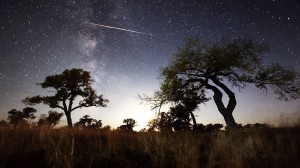The other night, I shot a timelapse of the Moon, Venus and Jupiter conjunction west of Madison, WI. It was about 20 degrees, so not real cold, but cold enough to need some cold weather gear on the camera. The above video shows the short timelapse, and also a behind the scenes timelapse. It is a crescent moon, but I was shooting 20 second exposures, so it looks full. A Storm Jacket by Vortex Media is on the 5D Mark II, on the Dynamic Perception Stage Zero Dolly.
Hand Warmers for dew/frost
I get a lot of questions like, “How do I keep Dew or Frost from building up on the lens?”, in cold, or just damp nights from humidity. Every night I shoot, whether I think I need it or not, I use disposable hand warmers on the lens. I place it on the bottom of the lens and hold it on with a rubber band. You could also use anything else that would work to hold it on, like a velcro strap, tape, etc. The temperature of the lens only needs to be a little warmer than the outside temp to keep it dew and frost free. I used them when I shot Sub Zero, in -25 F wind chill. This works most of the time. But if the humidity is extremely high, it may not keep up on a real wide angle lens with a large front element, like the Nikon 14-24. But I’m not sure if a battery operated one would work any better. They sell battery operated lens warmers, but I don’t want to deal with any more wires and batteries than I already have. You can also buy a lot of hand warmers cheaper than buying one battery operated lens warmer.

Storm Jacket by Vortex Media
My timelapse setups usually run for 3-4 hours, and most of the time I’m not immediately near it. It’s best to set it up and leave it alone. That way stray light from a flashlight, doesn’t ruin the shot. I have been looking for a replacement for the cheap rain covers that I have used in the past. I found one that I think will work better than others I have looked at. It is the Storm Jacket by Vortex Media. The Storm Jacket is compact when folded up and has a bungee closure at each end. See more info about it on their site.
The Storm Jacket Pro Model, which I have, also has a large velcro opening on the bottom. That way you can use it with a tripod, or on a dolly. I’ve used it on the Dynamic Perception Stage Zero dolly and it worked great. The Storm Jacket is well made and will keep dew, rain, snow and dust off of the camera. It also hides the red led on the camera, but with the 20 second exposures in the timelapse, it shows up more than it actually did to the eye. See photos below.
Rokinon 14mm lens
I also recently bought a Rokinon 14mm lens, it seems like a good lens for the price, and I like what I shot with it that night. There is a still from it on my T2i, below. I have yet to try it on my 5D Mark II, but I’ve heard it works great on it.











